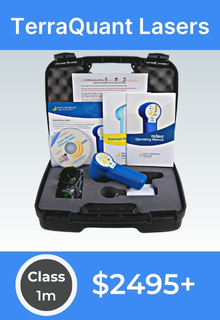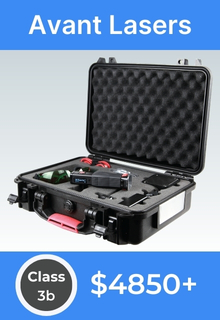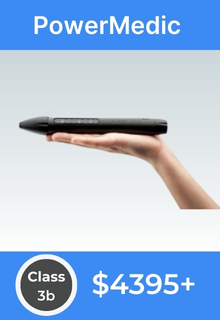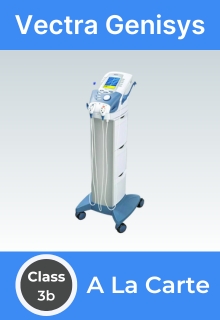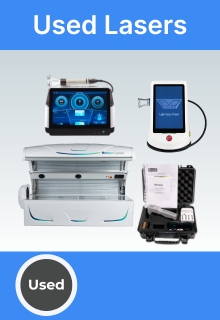Power
Super Pulsed, Pulsed, Sweeping and Continuous Wave Cold Lasers
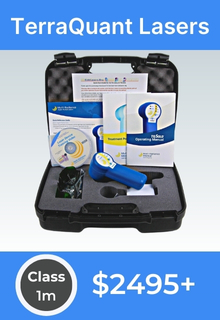
TerraQuant / MR4
- Professional and Home Use
- Up to 50 Watt Peak Power
- Best Selling U.S. System
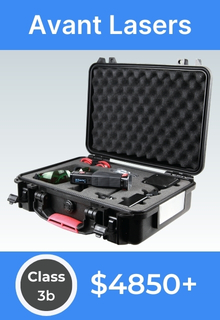
Avant Systems
- The Most Flexible 3b Laser
- Pulsed Sweep and CW
- IR/ Red / Violet
- Broad and Pinpoint
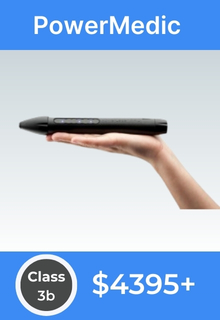
PowerMedic
- Handheld 1W-3W
- Hyperpulsing
- 810nm Danish Design
- Exceptional Quality
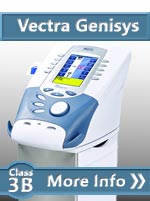
Vectra Genisys
- Pro Only Systems
- Optional Electrical Stim
- 670nm-950nm
- Up to 1.04 Watts Pulsed or CW
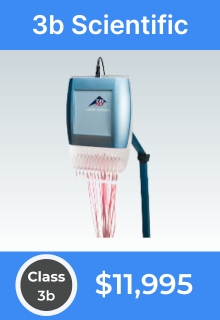
3B Scientific
- Multipoint Therapy
- 12 Simultaneous Points
- 660nm and 785nm
- Acupuncture /Trigger Point
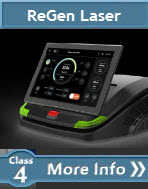
ReGen Laser
- The State of Art
- Class 4
- Up to 6 wave
- Up to 104w
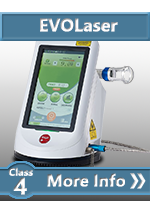
EVOLaser
- 9W-27W
- Single, Dual and Quad Wave
- Continuous and Pulsed

Apollo Lasers
- Handheld, Portable, and Desktop Versions
- Broad and Pinpoint
- 2-5 Watts Continuous

Used Systems
- Pro Only Systems
- Optional Electrical Stim
- 670nm-950nm
- Up to 1.04 Watts Pulsed or CW
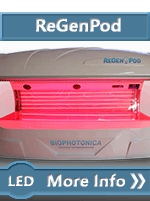
ReGen Pod
- 7.6 kW Pulsed & CW
- Whole Body Pod
- Incredible Results
- The Absolute Best Pod

Guide to Laser
- Learn More

Compare Every Brand
- Learn More
Another variable that has a major impact on the results of cold laser therapy is pulse frequency. Per Wikipedia; "Frequency is the number of occurrences of a repeating event per unit time." In the world of cold lasers, there are 2 totally different events that have a frequency.
- Light Frequency: The light frequency is the wavelength of the light emitted from the lasers. We know that some wavelengths are better than others at penetrating tissue and the typical cold laser wavelengths are 600 nanometer to 980 nanometers, in the red and infrared range.
- Pulse Frequency: The rate at which a laser is turned on and off (or pulsed).
We have already written this detail about light frequency (or wavelengths) and now we will review pulse frequency. Thanks to modern laser technology, cold lasers have the ability to be turned on to form a continuous wave (CW) or can be turned on and off to form a pulsed wave (PW). Many years ago, it was very difficult to create a laser that would not burn itself up very quickly. The energy level inside the laser diode is so high that lasers would burn out. Then they developed lasers that would turn themselves off for short periods and this would let the unit cool so the life was extended. Since then, cold laser manufacturers and practitioners have been using both continuous and pulsed lasers. Over the years, they started to see that they were getting different results from CW and PW lasers. They found that the frequency which you pulsed the laser changed the way it interacted with the body. Now there are two theories that overlap widely about pulsing and continuous wave lasers:
- Continuous wave lasers are best for pain control. In order to acheive this you need to get the maximum power into the tissue to saturate the area with photons and trigger an inhibitory response. As long as there is no significant heating, you can't hurt the area and patients get the highest level of pain reduction. CW lasers are great because patients leave the office feeling better, instantly.
- Pulsed wave lasers are better for healing and reducing inflammation. In general pulsing the laser lowers the photon density since the laser is off some of the time. At the same time, pulsing can trigger a stronger reaction with the cells that is better for promoting long term healing. The goal is to stimulate the body. The downside here is healing a chronic problem can take weeks or months. The patients get some pain control and start to feel a difference the day after their treatment, however the main goal here is long term healing.
Many manufacturers have devices that include both continuous wave and pulsed waves in one laser. As stated above, the company's protocols use a lower-frequency pulsing wave for long term healing, and continuous waves for pain control.
Every injury is different so cold laser users must decide whether they want inhibition or stimulation. For some, relieving their pain allows them to resume daily activities and many times the problem heals with time. For others, fixing the root of the problem is the goal. As we know, this process can take weeks or months. Some patients may be discouraged if they don't feel immediate improvement, and may stop therapy. This is challenge for you as a cold laser practitioner. You can optimize the therapy for short-term or long-term goals based on the pulsing frequency, however the hard part is determining what is best for each patient. With the exception of super low power lasers (like the ML830), continuous wave lasers are more expensive and dual operation lasers (pulsed and continuous) are also more expensive. If you value flexibility, and your budget allows, a higher power laser that can support both continuous and pulsed operation, is the best option.
If you have any question for feedback about this article, please call me at 1-800-388-0850.
